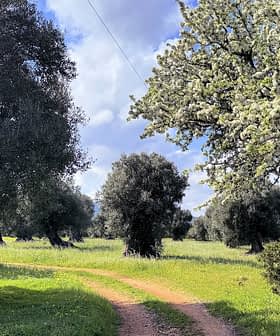Heat, Drought Causing Forest Die-Offs Globally
Forests play a vital role in stabilizing the climate by regulating ecosystems and protecting biodiversity, but rising temperatures and drier weather are putting them at risk.
New research indicates that rising global temperatures and prolonged periods of drought are causing forest die-off events globally.
A team of international scientists has examined forest die-offs in 675 locations since 1970.
What we found was that at the global scale, there was this consistently hotter, drier pattern… that can show us how unusually hot or dry it has to get for forests to be at risk of death.
By analyzing these episodes and comparing them with existing climate data, the scientists were able to identify the local temperature and drought conditions that determined the tree mortality events. A global georeferenced database was then created.
In the study published in Nature Communications, the researchers said there is a lack of data about how forest ecosystems will survive rising average temperatures associated with anthropogenic climate change.
See Also:Wildfires Are Becoming More Frequent and Intense Globally, Researchers Find“Lacking is the quantitative determination of commonality in climate anomalies associated with pulses of tree mortality… required for understanding the role of extreme climate events in overall global tree die-off patterns,” the scientists wrote.
Widespread tree die-offs may prove to be exceptionally damaging to global efforts to mitigate the impacts of climate change.
The latest State of the World’s Forests report by the United Nations Food and Agriculture Organization and the U.N. Environment Program said these unique ecosystems cover only 30 percent of the global land area but are home to the vast majority of the terrestrial plants and animal species.
Forests play a vital role in stabilizing the climate by regulating ecosystems and protecting biodiversity. Apart from supporting the livelihood of large populations, the researchers emphasized how forests are composed of more than 60,000 tree species, store nearly half of the terrestrial carbon and sequester up to a third of annual anthropogenic carbon emissions.
According to the International Olive Council, “a hectare of olive trees cancels out one person’s annual carbon footprint.”
“Our analysis quantifies a global ‘hotter-drought fingerprint’ from these tree-mortality sites, effectively a hotter and drier climate signal for tree mortality, across 675 locations encompassing 1,303 plots,” the researchers wrote.
“The frequency of these observed mortality-year climate conditions strongly increases nonlinearly under projected warming,” they added. “Our database also provides the initial footing for further community-developed, quantitative, ground-based monitoring of global tree mortality.”
“What we found was that at the global scale, there was this consistently hotter, drier pattern… that can show us how unusually hot or dry it has to get for forests to be at risk of death,” William Hammond, co-author and plant ecophysiologist at the University of Florida, added in a note.
The scientists emphasized how rising temperatures threaten forests in several ways, including amplifying atmospheric drought, intensifying soil drought and causing heat stress to the plants. As the temperature rises, soils and trees lose water more quickly.
A warmer environment can also trigger lethal events in unexpected ways, according to Cuauhtémoc Sáenz-Romero, co-author and researcher at the Universidad Michoacana de San Nicolás de Hidalgo in Mexico.
“In recent years, the dry and warm March to May season is even more dry than usual, but also warmer than ever,” he said. “This combination is inducing a lot of stress on the trees before the arrival of the next June-to-October rainy season.”
“For example, in 2021, more than 8,000 mature trees were killed by bark beetles in the Monarch Butterfly Biosphere Reserve in central Mexico,” Sáenz-Romero added. “The effect of the La Niña Pacific Ocean stream resulted in drier, warmer conditions; a deadly combination that favored pest outbreaks.”
According to the researchers, the study shows a general acceleration of destructive climate conditions destined to worsen over time as temperatures continue to rise.
“Earth’s historical forests in particular face a challenging future, including dramatic changes in the extent, composition, age and structure of these unique and irreplaceable forests, with planetary-scale consequences for biodiversity and the cycling of water and carbon,” the authors wrote.
In their conclusions, scientists emphasized how forests are essential in efforts to mitigate the impacts of the climate crisis. However, their ability to stand as carbon sinks is strictly related to their survival ability.
“Plants do a phenomenal job capturing and sequestering carbon,” Hammond said. “But the death of the plants not only prevents their performing this critical carbon-capturing role, plants also start releasing carbon as they decay.”
“Our findings show that limiting warming to 2 ºC above pre-industrial levels could reduce the frequency of these climate conditions associated with observed tree mortality events to less than half that predicted at 4 °C,” the researchers wrote.
“Efforts to protect the world’s climate from excessive warming likely will be decisive in determining the future persistence of many of Earth’s forests,” they added.
The database composed by the researchers is now available on the International Tree Mortality Network website, where collaborating scientists can also add data to provide a larger picture and a broader understanding of forest die-off events.








